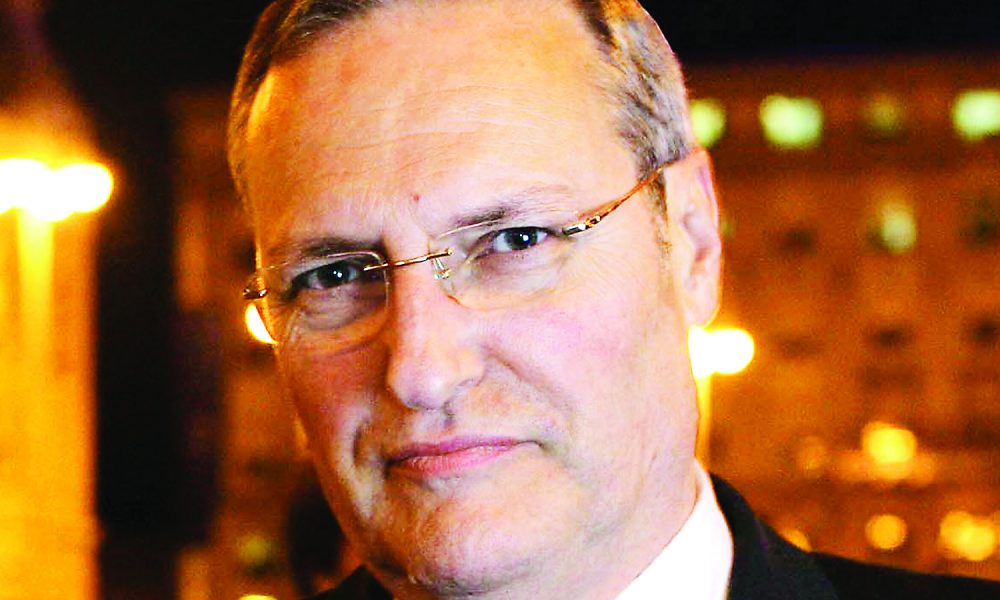Featured Item
SA Jews asked to help find Holocaust child killer

Renowned Nazi hunter Efraim Zuroff has called on South African Jewry to help him identify a woman who may be responsible for unspeakable acts of cruelty during World War ll.
“Sadistic just isn’t the word,” Zuroff said of her actions in an interview with the SA Jewish Report this week. “If we can identify this person and expose her, we’ll be able to ensure that some justice is achieved for those who perished at her hands.”
According to the records Zuroff has access to, this woman, who was referred to as “the student”, murdered Jewish children. “According to the description, a survivor saw her at a pit outside of the town of Rassein [in Lithuania] murdering Jewish children,” says Zuroff. “He describes how she would smash their heads in with rocks, sometimes even using other babies’ heads instead.
“This image has haunted me from the moment I read it.”
Unfortunately, the account provides only a last name for this woman. After much investigation, Zuroff found a 95-year-old woman living abroad with the same surname and of an age that potentially fits the student’s timeline. Given the lack of information, he is appealing to the local Jewish community for help with the investigation.
Although 75 years have passed since the end of World War II, there are still Holocaust war criminals at large. Zuroff has spent decades pursuing and convicting war criminals for the atrocities they committed during the Holocaust. He is hoping there are South Africans of Lithuanian descent who can help him.
The woman (whose name cannot be divulged for investigative purposes) came to Zuroff’s attention after being identified in the testimony of a survivor by the name of Leib Kunichowsky, a resident of provincial Lithuania.
“Kunichowsky lived in Kovno, endured the ghetto, and survived the Shoah,” says Zuroff. “He then spent four years collecting testimonies from across the provincial towns of the region, collating what would become an important set of papers that only come to light in 1989.”
Kunichowsky’s collection amounting to 1 684 pages remained unknown for decades owing to his reluctance to allow outside access to the information.
“He wanted to publish the whole collection, and no one was willing to help him do it,” says Zuroff. “It wasn’t written like a book – it was a huge collection of testimonies. It was only after Kunichowsky finally decided to hand it over to Yad Vashem that we got access to the information at last.
“It was incredible. Kunichowsky had taken every effort to ask other survivors to name perpetrators in full, including the names of people who had been their neighbours. They came from across the provincial towns in Lithuania, and had all been involved in some act of violence against Jews.
“This made clear the role played by Lithuanians in the act of mass murder.”
About 171 separate Jewish communities are mentioned in the testimonies, with each page written in Lithuanian Yiddish, and signed by both the survivor and Kunichowsky himself. Zuroff worked closely with the text for years, extracting every perpetrator’s name and compiling a list of 1 284 implicated local Lithuanian residents.
“We only knew about 163 of them from other sources. That meant we now had the names of 1 121 individuals that we wouldn’t ever have otherwise known about who had been actively involved in murdering Jews. It was a treasure, in a sense.”
Zuroff spent years tracking down the people mentioned, relying heavily on the records of the International Tracing Service established by the Red Cross after the war. Consisting only of innumerable index cards, the records included names and immigration destinations of thousands of people who relocated after the war, Jewish and non-Jewish.
“There was no way of knowing if a person was actually a Nazi or not,” says Zuroff. “I had to work closely with multiple other pieces of information to track people down and bring Nazis to trial. The index cards were ultimately copied onto microfilm, and only Israel allowed free access to the information. It wasn’t easy to find people.”
Over the years, Zuroff has pursued numerous cases drawn from Kunichowsky’s information, many of them successfully. From camp commanders in the Balkans to female camp guards at Ravensbruck, his efforts have taken him across Europe to find some of the most sadistic individuals imaginable. This has brought him to his latest case.
“Because the majority of South African Jewry has roots in Lithuania, we are looking for Jews in South Africa with any connection to Rassein who might help us to discover this woman’s full name.
“Whether your ancestors come from there or you know someone living there today, any information which could help us identify this woman would be incredibly helpful.
“From the minute I heard that a woman by the surname mentioned was alive and living abroad, I started thinking of the poor children who suffered at her hands. The cruelty of this woman resulted in her committing atrocities at a young age, murdering our Jewish children. If this is her, we need to bring her to justice.”
Zuroff is determined to identify the woman, strip her of her adopted citizenship, and deport her for trial. “This is a process that takes time, and she is already very old,” he says. “If it is her, we need to expose her and make sure people know who she is and what she did.
“To identify a perpetrator 79 years later and track her down would be one of the most important achievements of my career. Think what this means: if you harm a Jew, another Jew will make sure you pay for it, even decades later. As Jews, we’re all responsible for one another.”
- Any relevant information can be forwarded to swcjerus@netvision.net.il